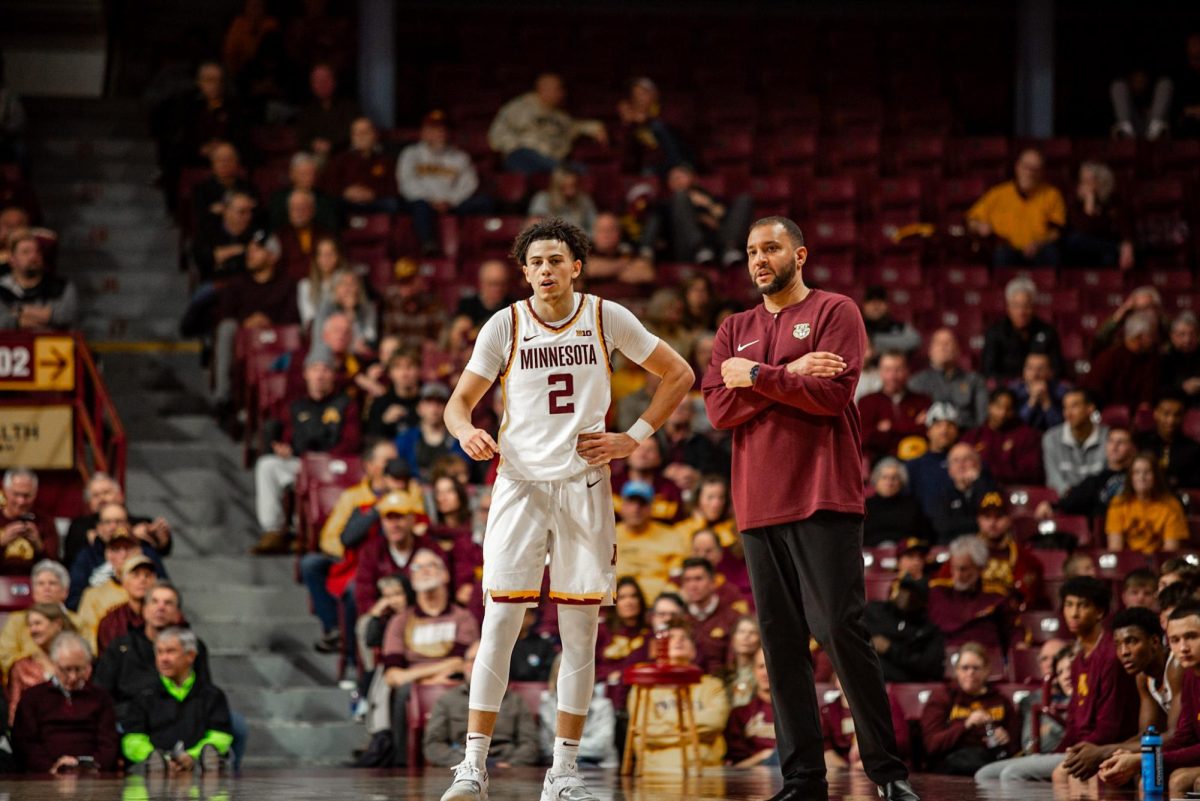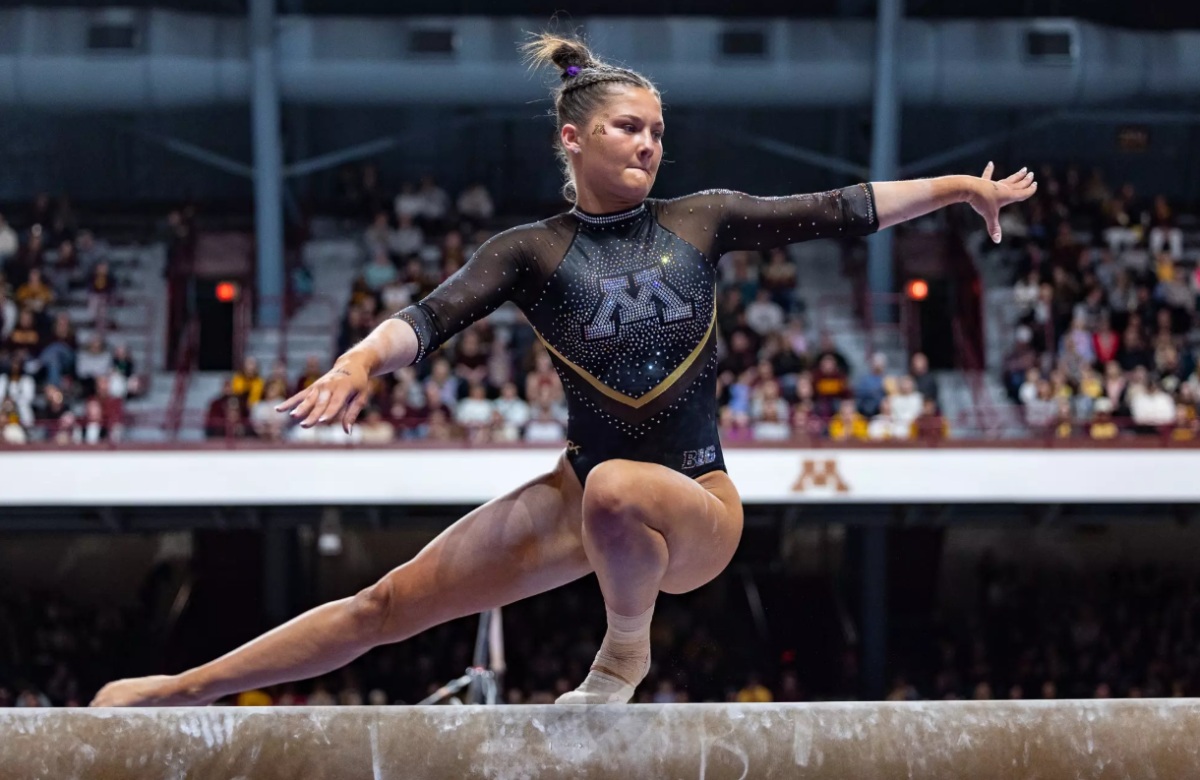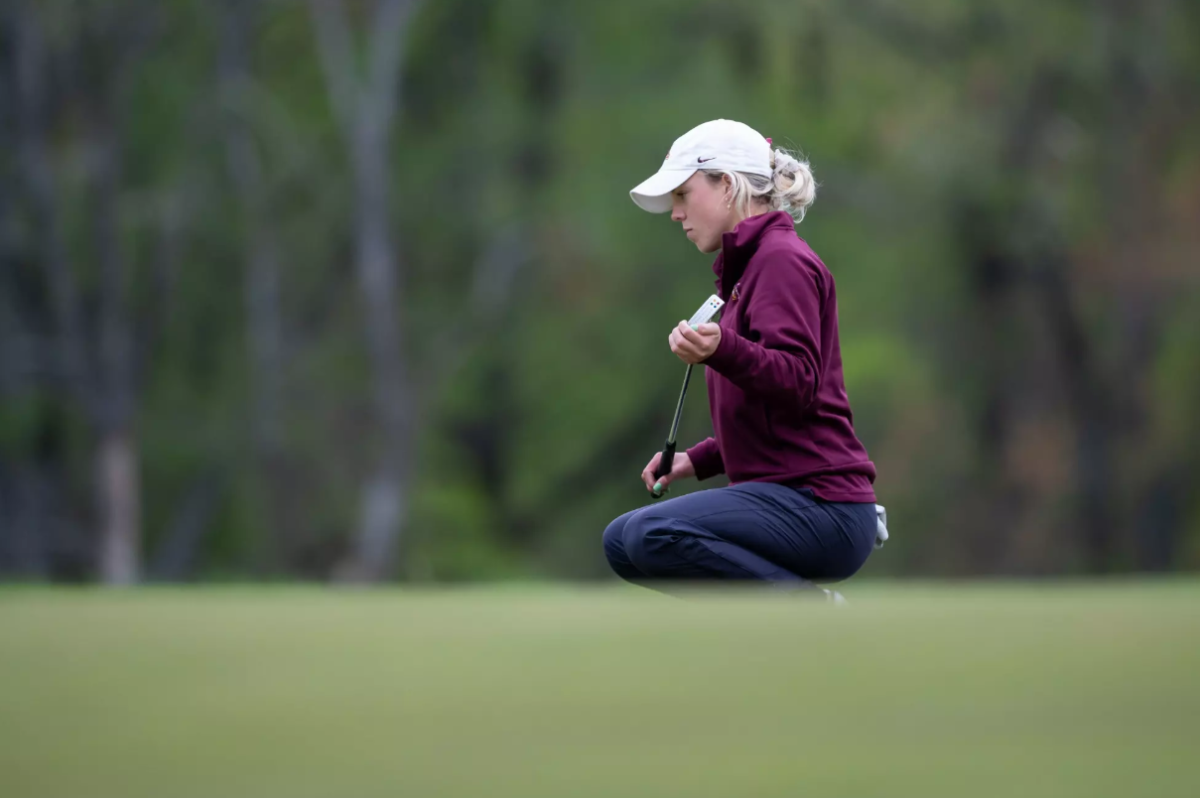Four years ago when she walked-on Minnesota’s track and field team as a pole vaulter, Monica Stearns never imagined jumping over a 12-foot bar.
But this past weekend, she cleared a 14-foot-1.25-inch bar in Jonesboro, Ark. and provisionally qualified for the U.S. Olympic Trials which begin July 9 in Sacramento, Calif.
After topping her own previous Minnesota record by more than six inches, Stearns said that literally raising the bar to new heights is now simply expected.
“I have been ready,” Stearns said. “It was very exciting knowing that I had cleared the height (to qualify) but I knew I was ready to do it.”
According to Minnesota women’s track coach Gary Wilson, Stearns easily cleared her new record mark of 4.30 meters (14-1.23) during warmups at the NCAA Championships in Austin, Texas on June 11. If she had done so during competition, she would have tied for first place with UCLA’s Chelsea Johnson.
With her mark in Jonesboro, Stearns cleared the “B” standard of 14 feet that provisionally qualifies her for the trials, which accept 24 pole vaulters. Currently, according to the USA Track & Field Web site, only eight athletes have cleared the “A” standard of 14-8, while 13 have qualified for the “B” standard.
While Stearns said she is now expected to perform at a high level, she said her improvement since joining the Gophers has been significant.
“Looking back on it now it’s very surprising,” she said. “I mean, when I was a sophomore I was really excited to clear 11 feet.”
As an underclassman, Stearns couldn’t imagine clearing 14-1.25. But now in Jonesboro, surrounded by world record holders and experts in her field, Stearns wants more.
“I definitely think I can go higher,” she said. “There is a great atmosphere here. Since I have already qualified for the trials, I don’t really have a set goal but I feel I can go higher.”
How did she do it?
Stearns credits many things for her dramatic improvement in the pole vault – which relies on a flexible pole to throw one’s body over a towering bar. She said her coaches, facilities and equipment all aided her progress, but Wilson added something else.
“The biggest thing (for her improvement) has been her perseverance,” he said. “I don’t think any pole, coach or facility can take the credit. She had to get herself to this level.”
Minnesota assistant coach Matt Bingle, who coaches jumping events, also said Stearns’ improvement is indicative of her work ethic.
“She walked into the program as a 10-foot jumper and is now jumping six feet higher. That’s a huge difference and it’s a testament to her hard work.”
Commitment?
Stearns said she has put more time and effort into her pole vaulting career than anything else she’s done.
“Ever since I picked up a pole I just really loved it,” Stearns said. “I have spent a lot of time and effort learning how to do it well.”
Bingle further explained the extent of the commitment and time Stearns’ achievements have taken.
“It’s a yearly commitment,” Bingle said. “Some girls come in and don’t do everything it takes. Monica has done everything that has been asked of her – from eating right to living right to training right.”
Bingle emphasized that Stearns’ commitment has taken more than practicing her event. He said Stearns has spent time in the weight room and on the track getting stronger and faster.
But the question, as the Olympic trials approach, is whether all the hard work will matter.
Does she have a shot?
Wilson is quick to point out that the average age of Olympic athletes in the 2000 games was just over 29 years. He said while Stearns has come a long way she still has a lot of work to get to the next level.
“To make the Olympic team takes a lot of weathering,” Wilson said.
But in her journey from nonrecruited athlete to all but securing a spot among the top 24 pole vaulters in the country, Stearns has a head start on the weathering process.







